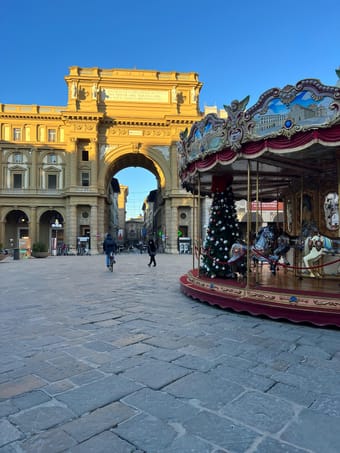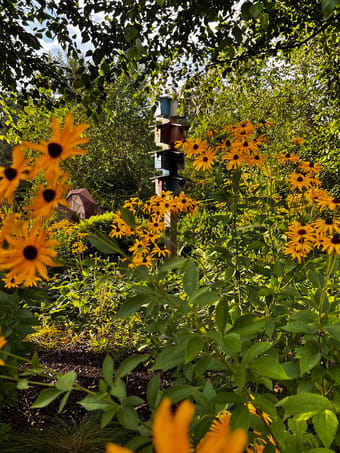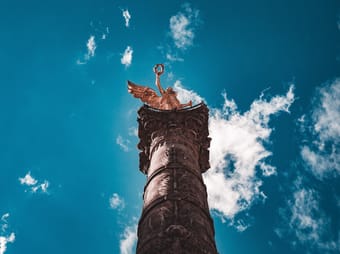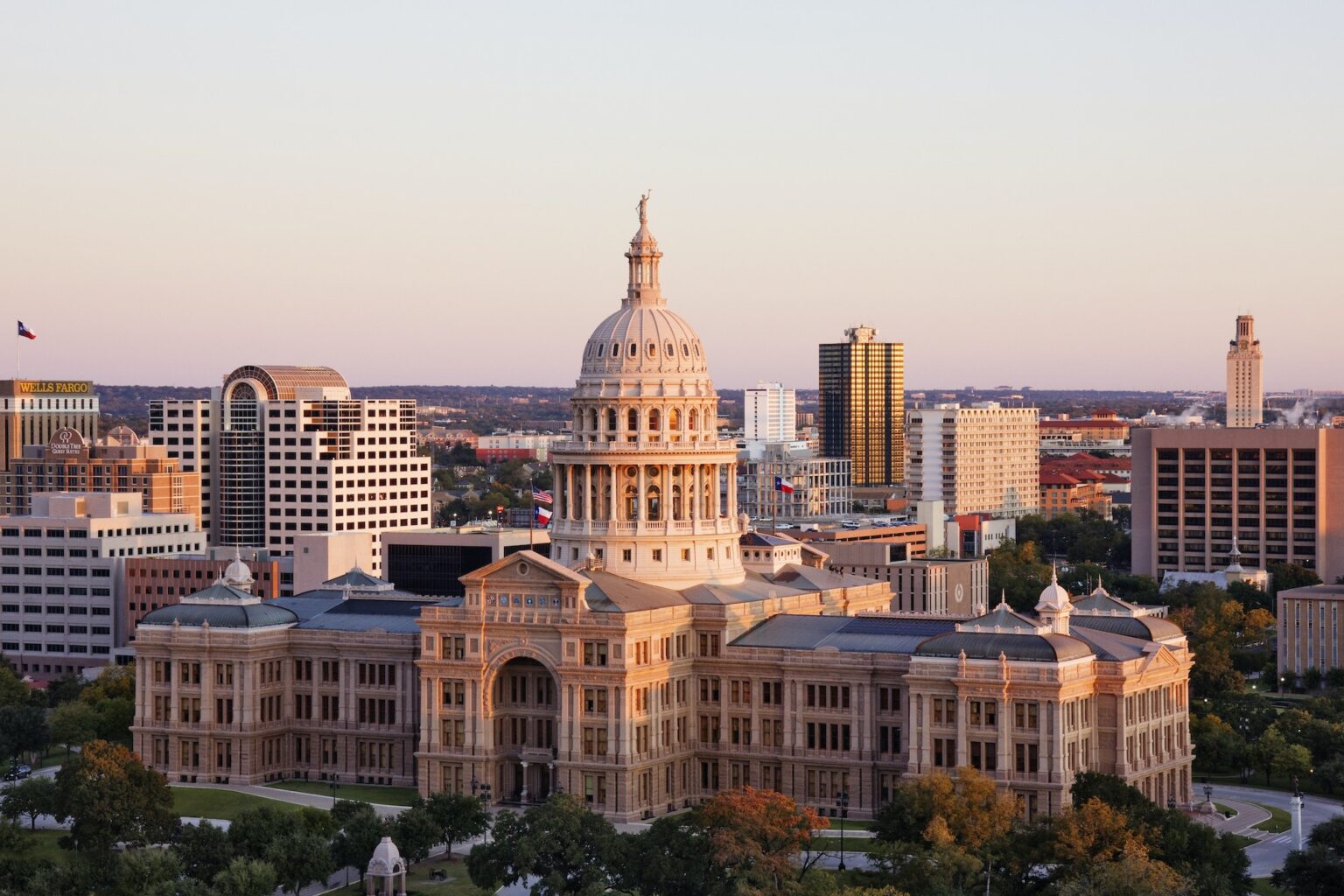Results for Galle
Museums, Independent Cinema, Cool Hanging Out places for artsy people 🎨🎞🦋
✨Content Table✨
1) Independent Cinemas - 2 Places
2) Art Galleries/Museums - 7 Places
3) Independent Book Stores - 3 Places
4) Cool streets and Graffiti - 3 Places
5) Film Photography Venue (Film developing stores, Film camera stores, Film stores) 🎞 - 4 Places
6) Yearly Art Festivals - 5 Festivals
Only an insider knows!!
Art
$7.00
0
My love to Edinburgh started with architecture aesthetics & local fashion. Even though I'm a food lover, the cuisine is defined more like comfort food than the gourmet. However, you can definitely find any options for your taste & budget from local quirky pubs to fancy fine dining restaurants. Do you know where J.K.Rowling was writing her first legendary chapter of the Harry Potter? Go check it out here now!
Whether it's your first time or you're a loyal city visitor or even a local, you definitely might discover some new spots & hidden gems of Edinburgh worth your time!
This guide includes:
- Areas & Sightseeings
- Coffee & Brunch
- Lunch & Dinner spots
- Local Shopping
- Museums & Galleries
- Local Food
I've visited for Xmas vibes in December during festive season (but the city is charming all year long) & completed my to-do list with all these spots within just 2 days, so you can plan your trip according to your pace of travelling!
Enjoy!
50+ • Backpacker • Couples • Accessibility • Digital Nomads • Family • Gluten-free / Celiac • Groups • Female Solo • Vegan • Vegetarian • Adventure • Architecture • Art • Boutique • Budget • Coffee • Design • Faith • Foodie • History • Luxury • Outdoors • Overlanding • People & Culture • Photography • Romantic • Shopping • Slow Travel • Sustainable/Eco • Wine • Relaxation • Road Trip
$7.00
0
Here is the list with all the classic Must Do’s in London - museums, religious sites, art galleries, theatres and even cinemas.
I would definitely recommend sightseeing London by boat, as well. A cruise on the Thames can easily make your whole experience a great one! You can use the Oyster Card (valid for any means of transportation in London) to travel in between objectives by boat: from Westminster pier to Greenwich pier for example. So, using the Oyster Card on the Thames Clippers River Bus services: only touch in with your card on the yellow card reader when asked to do so by a member of staff and remember to touch out again at the end of your journey.
History • Art
Free
4
This is a personal list of the best places to eat and drink in Margate, Kent. For all of you looking for the best coastal towns to visit in England this Summer, why not visit Margate?
With great transport connections from central London, this coastal town is un-missable. Not only will you find golden beaches and blue bays (on a sunny day), this town is beautiful in its individual way.
Included in this guide:
🥘 Where to eat; Margate is a small town that is packed with great independent dining experiences. Sea food to pizza, there will be something for everyone.
🍷Where to drink; summer days mean cocktails and beers with the warm wind on your face. Margate has a great bar scene, with enough places to hop around town all night.
⛺️Where to stay; I have selected the best places depending on budget, location and comfort.
🎡 What to see and do; with guidance on where to find the sea-side classics, the vintage finds and art galleries.
Margate is home to Dreamland, a vintage fairground, and is full of traditional sea-side fun. It is also home to the Turner Contemporary Art Museum and other artistic venues.
This is a locals guide, so you can trust that these recommended venues are tried, tasted and adored.
Family • Couples • Car-free • Digital Nomads • Vegetarian • Vegan • Female Solo • Beach • Foodie
Free
3
Barcelona - the capital of Catalonia - is a vibrant and dynamic city, full of exciting things to do. From its stunning architecture to its delicious food and lively culture, there's never a dull moment in this city. Visitors can explore iconic landmarks such as the Sagrada Familia and Palau Nacional, or stroll along the famous La Rambla promenade, taking in the sights and sounds of street performers and vendors. Barcelona is also renowned for its art scene, with world-class museums and galleries showcasing the works of famous artists like Picasso and Miro.
Catalans have their own traditional dishes. Chief among them is pork sausage both cooked (butifarra) and cured (fuet), as well as the ubiquitous pa amb tomàquet (pan con tomate in Spanish), grilled bread rubbed with tomato and garlic, drizzled with olive oil, and sprinkled with sea salt.
For something more local, try fideuà, essentially the Catalan version of paella, made with short noodles instead of rice.
Make sure to sweeten up your trip with:
- xuxo: traditional Catalan pastry with sweet cream filling and sugar coating;
- mel i mato: dessert made from fresh goat cheese drizzled with honey;
- tarta de Santiago: a Galician almond cake made with ground almonds;
- panellets: small, round pastries made from ground almonds and flavored with coffee or lemon
For drinks, have a vermut (vermouth) instead of sangria; it's served over ice and garnished with a slice of orange and/or olives.
Also, you can try Cava, which got its name back in 1970 with the idea of distinguishing it from French champagne, the word meaning ‘Cave’ or ‘cellar’. Cava is rapidly gaining prominence in the world and rivaling champagne, 95% of all Catalan cava is made in Penedès in the vineyards surrounding the village of Sant Sadurní d'Anoia, close to Barcelona.
🏵️ The famous Antoni Gaudí - Spanish architect and designer from Catalonia, known as the greatest exponent of Catalan Modernism - worked almost entirely in or near Barcelona, therefore the city boasts with his works: Casa Batlló, Casa Milá La Pedrera (you can grasp a sight of the interior while having a coffee at Cafe de la Pedrera
DON'T MISS: the gift shop is amazing), Casa Vicens, Park Güell, Sagrada Família church, etc.
⚽️ For football enthusiats: you have to take a look around Camp Nou.
💡A trip to Abbey of Montserrat would also make a great idea.
⛱️Perhaps a day trip to Costa Brava (90 min by bus)?! 😎
🛍️When it comes to shopping, make sure you visit Girona Street. Here, outlet stores welcome visitors with open arms, offering tempting deals and unique finds.
Accessibility • Budget • Coffee • Foodie • Relaxation • Shopping • People & Culture • Art
$5.00
29
Welcome to your go-to guide for the most enchanting date spots and restaurants in Toronto.
Whether you're a local or just visiting, this guide has got you covered for every romantic occasion.
Why This Guide?
- Curated by locals with a flair for romance.
- Features a diverse range of options to suit all tastes and budgets.
- Includes exclusive tips on the best time to visit and what to order.
What's Inside?
Fine Dining: Elevate your date night with Toronto's crème de la crème of restaurants. Think candlelit tables, sumptuous menus, and world-class wines.
Casual Eateries: For those laid-back dates, explore cozy cafes and trendy food spots that offer a relaxed yet intimate setting.
Outdoor Adventures: If you're an adventurous couple, discover scenic spots perfect for picnics, stargazing, or even a sunset paddle on Lake Ontario.
Cultural Experiences: Add a touch of sophistication to your date with visits to art galleries and iconic sites.
Hidden Gems: Uncover lesser-known spots that offer a unique and private experience, away from the crowds.
Bonus: Tips on how to make your date extra special, from choosing the perfect outfit to selecting a memorable gift.
So, are you ready to sweep your partner off their feet in Toronto?
Let this be your guide to love and romance in this vibrant city.
Cheers to creating magical moments together! 🥂💖
Couples • LGBTQ+ • Digital Nomads • Business • Backpacker • Female Solo • Coffee • Foodie • Romantic
Free
1
Enter the charming neighborhood of Brera and you’ll soon forget all thoughts of the drab, industrialist Milan. Bohemian grit began to fill the cracks between the uneven cobblestone streets here after WWII, and by the 1960s, the local cafes and galleries brimmed with neorealist filmmakers and designers vying for the Compasso d’Oro award. Due north from Milan’s tourist-filled Duomo and past the storied La Scala, austere, modern palazzos make way for colorful residential buildings, their balconies overflowing with succulents, wisteria and honeysuckle. The name Brera comes from the Lombard word ‘Braida’ which means ‘green space.’ Once a fishing village where boats arrived on canals into Milan from the Northern lakes, today it is considered the most bourgeois neighborhood in Milan.
To experience a hint of old-world Brera is to shop at the weekly outdoor mercato on Via San Marco, notable for its colorful, overflowing bouquets, ample fresh fish selection, multiple produce stands and Italian fashion staples such as leather gloves and cashmere sweaters. On the winding pedestrian streets, worthwhile boutiques and vintage shops are mixed with tourist-hungry restaurants (to be avoided – I recommend the old-school trattoria tucked away nearby). Brera freshly exhibits a new generation of designers and concept boutiques, and admiration of the supermodel-esque locals.
Although more recently famous as a creative’s haven in the 1960s, Brera has for centuries attracted artists and designers who came to study at the art academy within the internationally celebrated museum Pinacoteca di Brera. Soon after it opened, Napoleon, the newly crowned King of Italy, is said to have intended the Pinacoteca to become the Louvre of Italy (Antonio Canova’s colossal marble statue of the monarch sits at the center of the palazzo courtyard today). To follow in the brushstrokes of the prestigious academy’s centuries of attendees is to shop at the historic art supply and print shop Ditta Crespi or flip through the engraved leather journal selection at Pettinaroli.
Couples • Groups • Shopping • Foodie • History • Design • People & Culture • Romantic • Coffee
Free
11
I live in Buenos Aires since 2016 and I am absolute in love with this city. I describe Buenos Aires as a blend between European cities and Latin passion. On this guide I will share with you my favorite places to go.
You will find:
-Hotel recommendations
-Shopping 🛍️
-Where to eat: Fine dining; Parrillas; Great Food
-Nightlife: Speakeasy; Rooftops; Well known bars
-Art: Museums; galleries
Free
1
What see in Firenze
There’s no better place for Renaissance art and architecture than Florence—from the Galleria dell’Accademia (home to Michelangelo’s David) to the cathedrals and arches that make up the Piazzale Michelangelo.
Architecture • Art • Boutique • Budget • Design • Foodie • Luxury • Outdoors • Overlanding • People & Culture • Photography • Relaxation • Road Trip • Romantic • Shopping • Slow Travel • Sustainable/Eco • Wellness • Wine • Adventure
$10.00
2
Guide for locals and travelers to the Rio Grande Valley which is the fifth largest in Texas behind Greater Dallas (aka DFW, Dallas-Fort Worth, or the Metroplex), Greater Houston, Greater San Antonio, and Greater Austin (State Capitol).
What can you find in my guides?
🔴 Airports, Seaports, Spaceports
🟠 Shopping & Outlet Malls
🟡 Fairs, Theme/Amusement & Water Parks
🟢 Zoos, Aquariums & Nature Parks
🔵 Museums, Galleries & Historical Places
🟣 Bars, Cafes, Casinos & Dining
*not all places will include the above-mentioned
**Contact me for personal guides, I will be making more for other areas around the US and the world.
Free
11
Prague is definitely worth visiting. It is a beautiful city with rich history, stunning architecture, and cultural diversity. The city offers a range of activities, including sightseeing, exploring museums and galleries, enjoying the nightlife, and sampling delicious Czech cuisine. Additionally, Prague is a relatively affordable city, making it an attractive travel destination for budget-conscious travelers.
Souvenirs you can bring home:
Bohemian Glass (near Prague, there are five Czech glass and crystal factories that can be visited), Prague Garnet (this precious gemstone is a symbol of the city’s rich cultural heritage), Mucha Posters by Alfons Mucha, Beer Cosmetics, Wooden Toys, Marionette Puppets, Karlovy Vary Spa Wafers, Kafka Museum Souvenirs, Special Reading Material from Palac Knih Luxor, Czech porcelain, the Prague golem, something with Krtek - the little mole (a famous cartoon character).
When it comes to food, be sure to check:
- Kolachkes (Traditional Czech Cookies) are small, sweet, and perfect for snacking on while exploring the city; made from a rich, buttery dough that is rolled into small balls and then filled with a variety of sweet fillings such as fruit preserves, nutella or poppy seeds (and are often sprinkled with powdered sugar for an extra touch of sweetness)
- Trdelník, made from a dough composed of yeast, flour, sugar, and eggs, the seemingly gourmet treat is wrapped around a spit and grilled until crispy on the outside and soft on the inside. Traditionally coated in sugar and cinnamon for a sweet and aromatic flavor.
Beverages? Beer, Becherovka (Herbal Liquor), Absinthe.
Highlights:
🍺 Beer - The Czechs will tell you that their beer is the best in the world, and they ought to know. Per capita, the Czech Republic consumes more beer than any other country. Pilsner Urquell, the worldʼs first pilsner beer, is top of the line; Gambrinus, made at the same brewery, is also good. The dark Krušovice has a surprisingly light quality; Budvar is the original Budweiser; and Staropramen is the Czech Republicʼs proud working-class brew. Small brewery labels, like Bernard and Lobkowicz, are also worth trying. Czech beer is rated by degrees – 10 degree, 11 degree, 12 degree – with the alcohol content increasing as the numbers rise.
🗿The Golem - Prague golem is a legendary figure in the city’s history and has become a popular souvenir for visitors. The Golem is said to have been created in the early 19th century by a rabbi named Judah Loew, who used the creature to protect the Jewish people from persecution. According to legend, the golem was made of clay and was brought to life through a magical ritual; it quickly became known for its immense strength and loyalty to its creator, but its power was also feared. Eventually, the rabbi realized he needed to destroy the creature before it caused any harm.
Today, the golem is a symbol of Jewish heritage and the power of folklore.
Free
23
Nestled in the heart of Wisconsin, Eau Claire is a vibrant city brimming with charm and adventure. From its scenic riverfront parks and lively arts scene to its bustling downtown and rich local history, Eau Claire offers something for everyone. Nature enthusiasts will love the miles of hiking trails and pristine lakes, while culture seekers can explore unique galleries, breweries, and music venues. With its friendly atmosphere and diverse attractions, Eau Claire invites visitors to experience its welcoming spirit and create lasting memories.
This list is an accumulation of our favorite spots and suggestions from locals.
50+ • Car-free • Couples • Family • Female Solo • Adventure • Art • Outdoors • Coffee • Foodie • People & Culture • Relaxation • Road Trip • Wellness
$19.99
0
Embark on a stunning city break in Milan, where every street corner unveils culinary delights. Indulge in creamy risottos, crispy cotoletta alla milanese, and heavenly panettone, savoring each bite in the city's cozy trattorias and sleek bistros. Wash it down with a velvety espresso or a refreshing Aperol Spritz, immersing yourself in Milan's vibrant café culture. Between meals, wander through historic landmarks like the magnificent Duomo and the opulent Galleria Vittorio Emanuele II, marveling at their architectural grandeur. As the sun sets, dive into Milan's buzzing nightlife, from trendy cocktail bars to chic wine lounges, where you can mingle with locals and fellow travelers alike. And for a day of tranquility, escape to Lake Como, where azure waters embrace picturesque villages nestled against the majestic Alps, offering a serene retreat amidst nature's splendor.
Free
1
Discover the splendors of Florence in just one day. Marvel at the breathtaking Duomo, encounter Michelangelo's David, and immerse yourself in the vibrant Mercato Centrale. Explore the artistic treasures of the Uffizi Gallery, cross the iconic Ponte Vecchio, and find serenity in the Boboli Gardens.
With this guide you will learn;
- a one-day itinerary
- practical information
- accommodation recommendations
- food suggestions
Architecture • Art • History • People & Culture • Romantic • Photography
$5.00
0
Chelsea is one of the most in-demand neighborhoods in New York City for locals and visitors alike. From art galleries and shopping to some of the city’s best food and drink, the neighborhood offers plenty for visitors to explore while being located conveniently for those who want to explore other neighborhoods in Manhattan and the outer boroughs.
Whether you’re looking for a luxury staycation or the perfect home-base to recharge after exploring the city, here are some of our favorite hotels in Chelsea.
Couples • Groups • Boutique • Luxury • Foodie • Shopping • Design • People & Culture • Romantic • Photography • Slow Travel • History
Free
1
If you're a food lover then you're in for a treat. This city is a melting pot of different cultures and flavors, making it one of the most exciting food destinations in the world. From street food to fine dining, this guide will take you on a culinary and cultural journey. Get ready to indulge and discover the hidden gems of Mexico City's food scene, while also exploring its top attractions. Whether you're a seasoned traveler or a first-time visitor, this guide will help you navigate the city.
📍 Breakdown of 8 distinct neighbourhoods
🍴 30 Delicious restaurants and food stops
🥂 15 Fun nightlife and mixology spots
🏛️ 12 Landmarks and historical sites
🎨 11 Galleries and museums
🌳 3 Peaceful green areas and parks
🌋 1 Volcano hiking adventure only two hours away
🚣 1 Half-day excursion to an important ecopark
🥾 1 Day trip to a stunning ancient mesoamerican city
Foodie • History • People & Culture
$25.00
1
Guide for locals and travelers to the Greater Miami Metropolitan Area and twhich is the largest in Florida and ninth largest in the United States as well as the Florida Keys.
What can you find in my guides?
🔴 Airports, Seaports, Spaceports
🟠 Shopping & Outlet Malls
🟡 Fairs, Theme/Amusement & Water Parks
🟢 Zoos, Aquariums & Nature Parks
🔵 Museums, Galleries & Historical Places
🟣 Bars, Cafes, Casinos & Dining
*not all places will include the above-mentioned
**Contact me for personal guides, I will be making more for other areas around the US and the world.
$11.99
11
This guide includes a curated list of historical streets, design stores, art galleries and cool places for drink & food culture.
One of the most dynamic guide to discover the history and flavors of Belgrade.
LGBTQ+ • Solo Female • Couples • Groups • Art • Architecture • Foodie • People & Culture • Coffee
$20.00
0
Guide for locals and travelers to the Greater Austin Metropolitan Area which is the fourth largest in Texas behind Greater Dallas (aka DFW, Dallas-Fort Worth or the Metroplex), Greater Houston, and Greater San Antonio. Greater Austin is the State of Texas Capital Region.
What can you find in my guides?
🔴 Airports, Seaports, Spaceports
🟠 Shopping & Outlet Malls
🟡 Fairs, Theme/Amusement & Water Parks
🟢 Zoos, Aquariums & Nature Parks
🔵 Museums, Galleries & Historical Places
🟣 Bars, Cafes, & Dining
*not all places will include the above-mentioned
**Contact me for personal guides, I will be making more for other areas around the US and the world.
$7.99
11
A complete guide to Ghent, my hometown.
In this guide you will find following recommendations:
- Must see
- Where to stay
- Food
- Coffee/matcha
- Bars (+ summer bars)
- Shopping
- Museum/art gallery
- Relax
- Events
This guide is currently not finished and free the use (for now).
Feel free to subscribe to get frequent updates.
Couples • Groups • Vegetarian • 50+ • Car-free • History • Foodie • Coffee • People & Culture • Shopping • Wine • Architecture • Art • Romantic • Relaxation
$15.00
1
Ask ThatchGPT



















